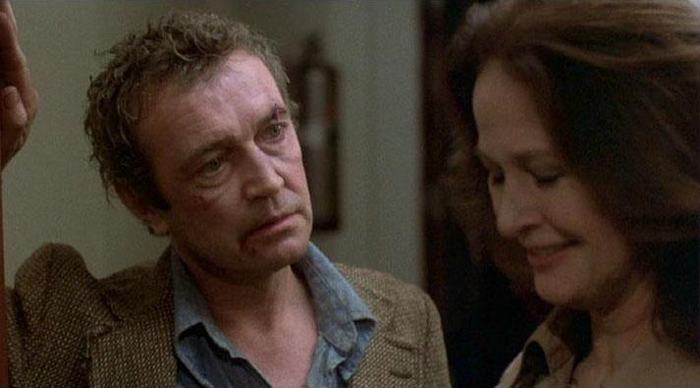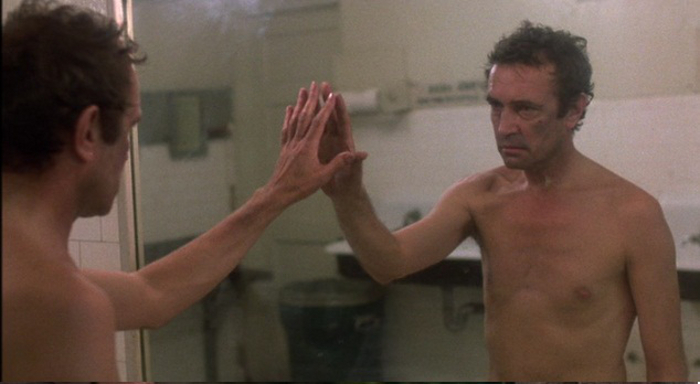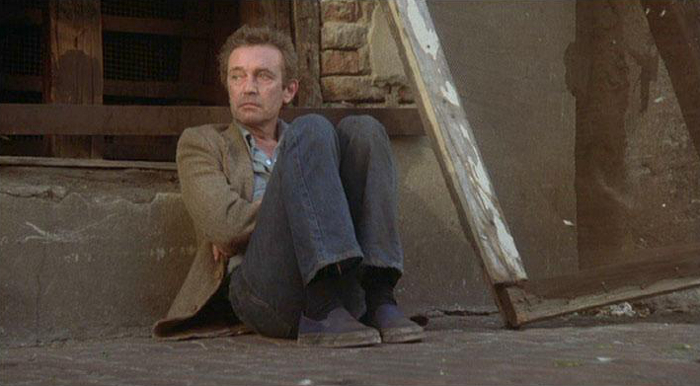Fred Walton’s debut feature, expanded from a short film titled The Sitter that he’d shot in 1977, is often spoken about in the same breath as the late 70s/early 80s slasher films but really When a Stranger Calls is a film of an altogether different order, a tense thriller that relies more on character and suspense than on gore and shock effects. It went into production shortly before John Carpenter’s genre defining Halloween (1978) was released (it perhaps owes more of a debt to Bob Clark’s Black Christmas (1974)), what with its killer already installed in the house as the action begins.) and lacks many of the tropes that would later be played and replayed to death as the slasher developed. It give us the ‘babysitter-in-peril’ motif that Carpenter took even further in his film, but it lacks the explicit violence and gore that would come to characterise the later slashers.
In 1972 Jill Johnson (Carol Kane) is babysitting the children of Dr Mandrakis when she starts receiving menacing phone calls from an unidentified man who keeps asking her if she’s checked the children. It turns out that the caller is in the house with her and has already murdered the two children. The police arrive before the man, later identified as British sailor Curt Duncan (Tony Beckley) can get to her and he’s incarcerated in a psychiatric hospital. Seven years later, Duncan escapes and, homeless and adrift in the inner city, tries to befriend barfly Tracy (Colleen Dewhurst). The cop who investigated the original case, John Clifford (Charles Durning), is now a private investigator engaged by Dr Mandrakis to track down Duncan and becomes increasingly obsessed with finding and killing him. His already fragile mental state deteriorating, Duncan locates Jill, now married with two young children of her own and the race is on to find him before history repeats itself…

When a Stranger Calls may not be a full-blown slasher but it certainly left some of its DNA in much of what was to follow. It was based on an urban legend that producer Steve Feke recalled from his youth about a babysitter being menaced by anonymous phone calls that turn out to be coming from inside the house and Duncan’s repeated demand of “have you checked the children?” rapidly became an urban legend in its own right, whispered over and over again in the years since even by people who apparently hadn’t seen the film. It struck a chord, possibly because the film is more rooted in reality than some of the more extravagant slashers yet to come. Its killer – superbly played by Beckley – is a complex and ambiguous character, a far cry from the unstoppable, increasingly supernatural psychopaths that would come to inhabit the Halloween, Friday the 13th and A Nightmare on Elm Street films.
We learn to our horror – and thank God for Walton’s restraint here – that Duncan didn’t simply murder the Mandrakis children, he tore them apart with his bare hands, and yet Walton and Beckley still beg some sort of understanding, if not exactly sympathy, for Duncan. He’s clearly utterly deranged but at every turn he’s let down by the system that should have been helping him. After seven years in incarceration, nothing practical has been done to help him (he’s had 38 sessions of electro-shock therapy) and he seems to be able to waltz out of his psychiatric imprisonment with apparent ease. Once outside he’s shunned by society, ends up panhandling in the inner city, beaten by thugs in bars and pursued relentlessly by Clifford.

He’s clearly a monster, there’s no doubt of that, but there’s a little wiggle room, enough to make audiences feel just a little uncomfortable. Clifford has to shoulder some of the blame for Duncan returning to torment Jill (“I had to come back,” he tells her but can’t explain why), his furious determination to put Duncan down like a mad dog doing little to help the man’s mental deterioration. In one of the film’s quieter but most memorable moments, the deranged Duncan shelters from his pursuer behind some alleyway rubbish bins, desperately intoning “I’m not here. I don’t exist. I was never born.”
Humanising the killer was something that was very far from the mind of the creators of many of the subsequent slasher villains who just wanted a lumbering, unkillable anti-hero – there was never a Curt Duncan action figure – with no mind to motivation, character or personality. Duncan is different and our relationship with his is complex and unsettling. It’s hard not to feel for him when he begs Tracy “I want you to be my friend… please!” but also to be deeply disturbed when he retreats to a subway restroom, strips naked and suffers a traumatic breakdown. He’s never likeable – he tore two children apart with his hands for God’s sake! – but nor is he ever the simple-minded monster.

When a Stranger Calls takes Duncan, and us, on a circular route from the cosy middle-class suburbs where the literally alien Duncan (he’s a British immigrant) invades the neatly ordered lives of the rich and successful, through his banishment to the grimy inner-city underbelly, a dismal demi-monde of late night bars, crippling loneliness and lost souls. When he returns to stalk the now-married Jill in her own suburban enclave he’s like well-heeled, middle-class America’s worst fears made flesh.
A lot of this is played out in the film’s quieter second act, often derided by the film’s critics. The barnstorming opening act – the material recycled from The Sitter – and the more traditional woman-in-peril closing sequence are the bits that the fans remember most fondly but the mid-section is where Beckley gets to take centre stage and puts in a fantastic turn as the tortured Duncan. He was an old hand at playing psychopaths of course, having turned up as Tom, one of the trio of the trio of psychotic housebreakers in Peter Collinson’s The Penthouse (1967), the sleazy Leslie Sanford in Sidney Hayers’ Assault (1971) and the insane Kenny Wemys in Robert Hartford-Davis’ The Fiend (1972). He was terminally ill at the time of shooting When a Stranger Calls and died died at the ludicrously young age of 50 at the UCLA Medical Centre on 19 April 1980, reportedly of cancer.

He’s given sterling support by top-billed Charles Durning as stoic cop turned avenging angel Clifford, a man every bit as terrifying as his prey (his first stone-faced appearance at the front door is an effective shock), Dewhurst who is magnificent as the attention of Duncan’s sexual and later would-be murderous attentions and not least by Kane, Oscar nominated for her turn in in Joan Micklin Silver’s Hester Street (1975) and only recently seen opposite alongside Al Pacino in Dog Day Afternoon (1975) and Woody Allen in Annie Hall (1977). Unusually for a potential victim in a “slasher” (sort of…) film, Jill consistently does all the right things although events are completely out of her control. She’s not the airhead found in most slashers, constantly wandering off into dark corners knowing full well that a killer may be lurking there, but a terrified, vulnerable young woman trying to do the right thing.
The film was a deserved box office hit (in the UK it was classier half of a double bill with Barbara Peeters’ Humanoids of the Deep (1980)) and its cult followed led to an inferior made-for-television sequel, When a Stranger Calls Back also directed by Walton with Kane and Durning reprising their roles, in 1993. As sure as eggs is eggs, a remake turned up in 2006, directed by Simon West (Con Air (1997), Lara Croft: Tomb Raider (2001)) and with Camilla Belle replacing Kane. It too did well at the box office but the general consensus was, quite rightly, that it was a sub-par retread.
I have found I have reacted differently to this film over the years. As a kid, the beginning part is what stuck with me, and the rest I forgot. Several years back, I watched and the beginning was still great but I felt the rest was sluggish and brought it all down. Recently, I rewatched and the whole film was good, to me. The beginning was still intense and then the rest is great look at an unhinged man just loose in the world. Interesting film.
LikeLiked by 2 people
It’s very much a film of at least two halves – there’s the standard horror stuff which is really well done (that opening 20 minute or so is amazing) but like you say a really interesting character study emerges in the mid-section that I find quite fascinating. Thanks in no small part to Beckley’s excellent performance of course.
LikeLiked by 1 person